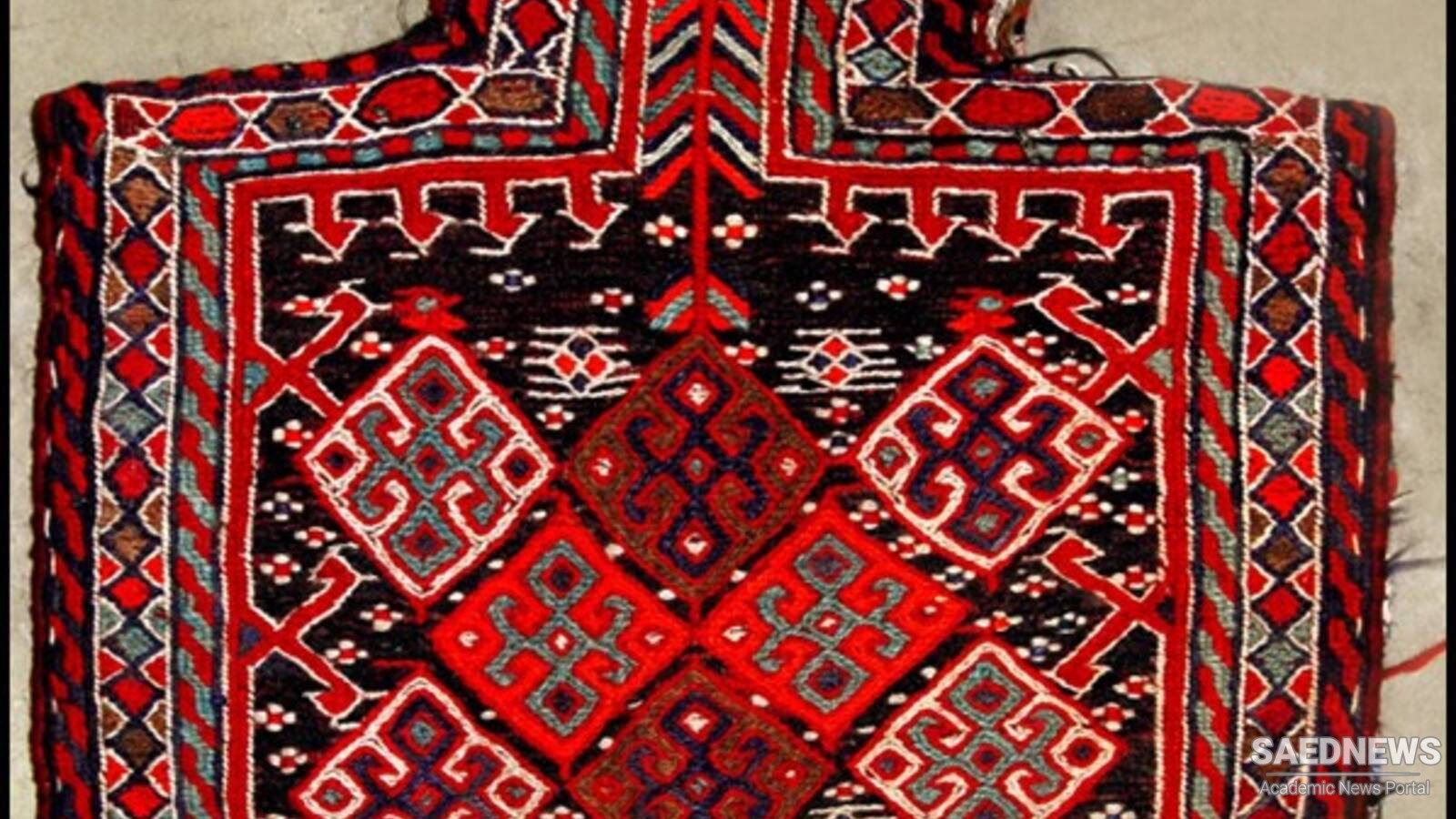The Namakdan of Bakhtiari are woven on looms, and just like other woven handicrafts of this region, are made by nomadic and villager women. Nomadic shepherds use Namakdan to carry chunks or grind salt to meet the necessities of the herd.
In Addition to breeding the herds, Nomadic people need salt in daily life. They put the salt in Namakdan and hang it in corner of their tents for cooking. Grind salt is very hard to prepare, and it is important to be taken care of. That is why the Namakdan is designed so that the salt does not pour out. In the culture of nomadic people the salt is a valuable blessing, related with thankfulness, and greetings of the guests. People may swear in the name of Namak (the salt) and use the word “Namak Nashnas” (a person who does not pay the rights of Namak) to describe unworthy people who use the salt but break the salt holder.
The form and design of Namakdan is a proof of its importance as a valuable and even holy object. It consists of a body and a head, which makes it look like a prayer rug. Weaving Namakdan has solid rules based on 4 principles 1. The front is woven by Pich Bafi (a special kind of knot of Kilim) 2. The bottom is woven like carpets 3. The back is a plain Kilim with strip design 4. Two sides are Pich Bafi. In terms of design and motif of Namakdan, various patterns are applied. Patterns of Howz (a small pool), strips, regular polygons, repetitious polygons, fishes, birds, Setareh Kharchangi (craby star) and foliage are some of the designs that can be seen in Bakhtiari Namakdan that, being made by rich and bright colors, attract the praise of the viewer. Green, blue, dark red, yellow and brown are most common colors of the Namakdan.


 Chaharmahal and Bakhtiari Province: Unexpected Wonders!
Chaharmahal and Bakhtiari Province: Unexpected Wonders!














































